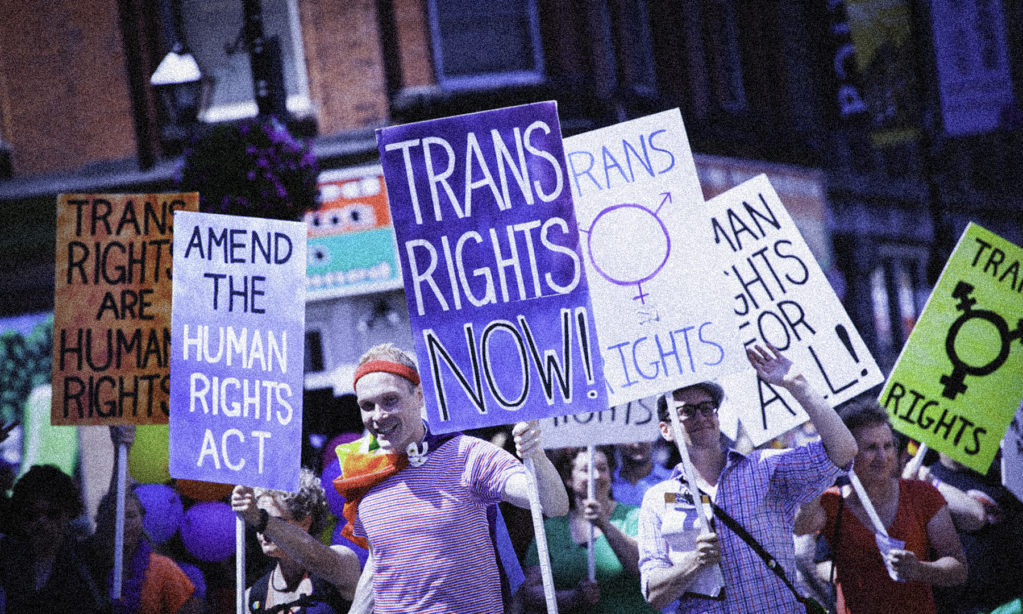In early 2022, the Canadian Women’s Foundation hired Wisdom2Action to consult with 2SLGBTQIA+, feminist and gender-based violence (GBV) organizations and service providers to identify needs, gaps, and recommendations to address and prevent GBV towards 2SLGBTQIA+ people. These consultations resulted in a final report, toolkit, and webinar series.
Through our consultations, we heard that GBV in 2SLGBTQ+ communities is pervasive but stigmatized; it is both hyper-visible and rendered invisible, known and neglected.
Transphobia, homophobia, and biphobia are structural forms of GBV that 2SLGBTQ+ communities navigate every day in their public and private lives. 2SLGBTQ+ communities experience family violence, intimate partner violence (IPV), sexual violence, and street harassment, but are often outsiders to GBV services built for cis, straight, white women. In fact, 2SLGBTQ+ people face discrimination and additional GBV while accessing GBV services and reporting GBV, compounding the violence.
Through a review of relevant evidence, we scoped out the depth of GBV’s impact on 2SLGBTQIA+ communities. Some concerning highlights include that 64% of trans and non-binary youth have experienced sexual harassment, 56% of trans women have had a partner that insulted, swore, shouted, or yelled at them, one in three racialized trans and non-binary people have been sexually assaulted in the past five years and 63% of bisexual women and girls have experienced physical or sexual assault.
Writ-large, 2SLGBTQIA+ people, and even more so further intersections thereof, are disproportionately impacted by gender-based violence.
The prevalence of GBV targeting 2SLGBTQIA+ communities is rarely acknowledged by policy-makers, and the intersections of homophobia, transphobia and misogyny are often completely omitted from government analysis. Our report sought to demonstrate that, on every level, we cannot talk about 2SLGBTQIA+ communities without recognizing systemic misogyny, and we can’t talk about gender-based violence without recognizing how such violence disproportionately impacts 2SLGBTQIA+ people.
However, language changes aside, governments struggle to operationalize an intersectional analysis of 2SLGBTQIA+ communities and gender-based violence. While we’re mentioned as a ‘priority population’ on many a government policy document or grant portal, there is minimal engagement with the unique factors that make 2SLGBTQIA+ people particularly vulnerable to GBV. We’re rarely in the room, rarely afforded a seat at the table, and our needs are rarely a priority.
Within our work, we identified promising practices to address and prevent GBV towards 2SLGBTQIA+ communities. These promising practices can provide a roadmap to governments, policy-makers and civil society organizations seeking an intersectional, 2SLGBTQIA+-inclusive approach to addressing gender-based violence. Promising practices include:
- Learning from the grassroots: 2SLGBTQIA+ communities have long leaned on community care and peer support to maintain our health and well-being. Our communities often turn to our peers first because of negative experiences within other spaces and institutions. Connecting with and learning from local 2SLGBTQIA+ communities is integral to advancing 2SLGBTQIA+-inclusive approaches to address and prevent GBV;
- Developing dedicated interventions: It’s not sufficient to simply accommodate 2SLGBTQIA+ people into existing interventions—our communities face distinct barriers, have distinct needs, and unique means of caring for ourselves. Through broadly inclusive services and tailored interventions, GBV organizations can more effectively reach and support 2SLGBTQIA+ people impacted by GBV; and
- Building relationships of trust with 2SLGBTQIA+ communities: 2SLGBTQIA+ community organizations are often siloed off from GBV services, and from associated health, social and community services. Building strong relationships founded on trust, accountability and reciprocity is essential to addressing and preventing GBV towards 2SLGBTQIA+ communities. Through strong and trusting partnerships, feminist, GBV, 2SLGBTQIA+ and other organizations can work together to improve access to care, ensure inclusive care experiences, and ensure 2SLGBTQIA+ people have a voice and seat at the table.
To date, no substantial government action on these issues
The state of affairs on 2SLGBTQIA+-specific GBV is one of segmentation and siloes. While there’s increasing recognition of the rights of 2SLGBTQIA+ people by our federal government, that recognition has not translated into substantial government action or specific commitments on anti-2SLGBTQIA+ hate or addressing GBV towards our communities.
A key concern is the relationship between rising anti-2SLGBTQIA+ hate and increased harassment of trans, gender diverse and 2SLGBTQIA+ people. If anti-2SLGBTQIA+ rhetoric continues to rise, it will result in increased gender-based violence towards 2SLGBTQIA+, and particularly trans, people. With hate-motivated crime against 2SLGBTQIA+ communities on the rise, we can no longer maintain a false dichotomy between the safety for 2SLGBTQIA+ people and the safety of women and others impacted by gender-based violence. We must address all of the above or else we’re omitting those most marginalized.
While the recently launched Federal 2SLGBTQIA+ Action Plan (with a $100 million budget over five years) is a significant step in the right direction, the plan includes next to nothing on gender-based violence towards 2SLGBTQIA+ people or on anti-2SLGBTQIA+ hate. These are glaring omissions amidst rising hate and harassment. There were some big commitments—support for 2SLGBTQIA+ community organizations, improving community engagement with the government and more—but no significant commitments on addressing hate or GBV as they impact 2SLGBTQIA+ people.
Similarly, there is concern within the 2SLGBTQIA+ sector that the $593 million dollar commitment from the federal government in budget 2022 to “Advance a National Action Plan to End Gender-Based Violence” will omit specifics for 2SLGBTQIA+ communities; that we’ll be sectioned off again from our feminist siblings as governments continue to recognize GBV only through a cisgender and heterosexual lens. As a queer trans woman, it often feels like I have to choose between my identity as a queer and trans person or my identity as a woman.
With gender-based violence on the rise throughout the COVID-19 pandemic, and anti-2SLGBTQIA+ hate ramping up on a global scale, now is the time to recommit to an intersectional approach within our organizational, sectoral, and governmental approaches to GBV. We must recognize that we cannot effectively address gender-based violence without addressing homophobia and transphobia too.
Governments must recognize that our issues can’t be siloed off in one part of one department. If we are to truly address rising hate and rising gender-based violence, we need truly whole-of-government approach, undertaken with an intersectional lens that brings 2SLGBTQIA+ people into the conversation.







